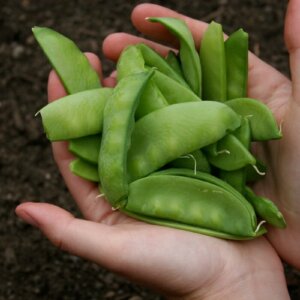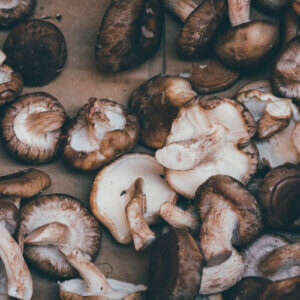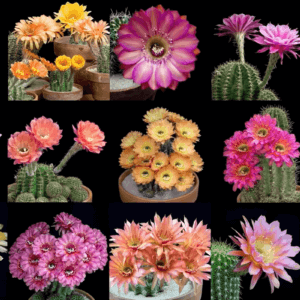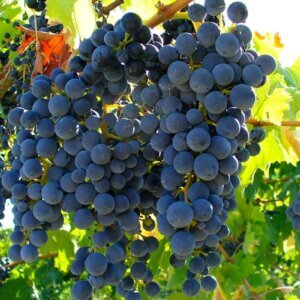“It’s so pretty.” I heard the comment of a nearby, daily walker. “Why is she pulling it?”
I wanted to stop what I was doing and explain, but I was making progress — well, sort of — and I didn’t want to lose momentum. It was a nasty job, pulling invasive weeds and this weed was one of the worst. It threatened to extinction everything that tried to grow in the general vicinity.
You’re probably wondering what weed could possibly be worse than dandelions, which have medicinal purposes and nurture the pollinators, particularly honeybees and wild parsnips. It may have once been a source of edible root vegetables, but it’s now considered toxic on many levels.
The current purge I was working on was the invasive Japanese knotweed. Pretty as it is with its delicate flash of white-green flowers, Japanese knotweed is listed as one of the top 100 invasive species by the Global Invasive Species Database. And, with good reason.
Japanese Knotweed Appearance
To describe it as tall when fully mature is an understatement. The Japanese knotweed can grow as tall as 9 feet (3 meters). Its stems are thick and tough like bamboo and its leaves are broad and shaped like teardrops. The plant grows densely and overtakes native vegetation. The stems of new growth are reddish or purplish. As the plant matures, the stem color turns green with red or purple specks. Small, greenish-white flowers appear in late July or August and produce a white fruit that encases the shiny, brown, triangular-shaped seeds. Wind and water help spread the seeds.
It’s a woody-stemmed herbaceous perennial, also classified as a rhizomatous plant due to its massive netting of rhizomes. The Japanese knotweed is part of the buckwheat (Polygonaceae) family. The naming of this family is apropos with its origins being from the Greek words, “poly” which means many (and Japanese knotweed definitely grows many) and “goni” which means knee or joint (probably referring to the bamboo-like stalks that dry out and die in the fall, but remain standing tall and strong all winter).
Natural Habitat
This invasive Japanese knotweed grows everywhere: wetlands, riverbanks, roadsides, ditches, utility rights-of-way, fence lines, and of course, my garden. In North America, it’s found in Canadian provinces from Ontario to Newfoundland and in parts of British Columbia where it’s not too arid (the interior regions of British Columbia can be very dry) and it’s found in 42 states outside arid regions like the Southwest and several of the Gulf states. It also doesn’t grow well in the highest areas of the Rocky Mountains in Canada or the United States.
With its invasive nature, it’s quite literally spreading across the continent. As it grows and aggressively takes over an area, its dense thicket of bamboo-like stalks has a negative impact on the native plants. Since it grows in dense thickets, it literally crowds out all the other growth. It has an extensive rhizome root system which is a particular concern when it affects building foundations and other infrastructure. The root system is particularly destructive as it can grow through asphalt and concrete.
Old homesteads are often overgrown with this weed which was probably once introduced as an ornamental plant. The wind spreads the seeds and the rhizomes spread unrelentingly underground. The rhizomes can be dug up, but not necessarily eradicated. And even forces of nature, like flooding, can’t diminish its spread. It’s a highly persistent species.
Edibility
Interestingly, the new growth that appears in spring has the appearance of asparagus spears, purplish in color before fading to green as it matures. If eaten, Japanese knotweed (which is considered by aboriginal peoples to be a medicinal herb) actually tastes something like asparagus. Some people describe it as a cross between asparagus and rhubarb. It can be eaten raw or cooked. It can be sautéed or pickled or even baked in a pies or crumbles. In fact, there is such a thing as knotweed beer! However, it’s best to peel the tough, outer layer in the more mature shoots. When eaten raw, it’s juicy and tastes tart like rhubarb, and it’s crunchy like both rhubarb and asparagus. The leaves can also be eaten like spinach — in a salad or cooked.
Whilst the weed is edible at any time during the growing season, the best time to use Japanese knotweed as an edible plant is April and May. The first shoots of spring appear at this time, and when they are about 8 inches in height, they are tender for eating. Later in the season, they become stringy (like rhubarb) and will definitely need to be peeled.
You can pretty much substitute Japanese knotweed for any of your savory asparagus dishes, or your sweet rhubarb desserts. Either way, peel it if the outer layer is tough and springy, and then chop the shoots into 1-inch pieces. For a savory dish, you may either boil until soft or sauté in butter for about 10 minutes until tender and light beige in color. Add salt and other herbs to taste and serve as a side dish or add to casseroles.
For a sweet dessert, boil in water and sugar (more sugar than water, usually 1 cup sugar to 1/4 cup water) until completely soft and most of the water has been absorbed. Add to pies or sweet sauces and serve like any other sweet dessert.
Sweet and savory as it may be, as an invasive species, it is illegal to transport or sell it in most parts of the country. Yet, gourmet restaurants everywhere have added Japanese knotweed to their menu in various forms, from raw to cooked, in all variety of dishes. It adds a unique flavor and makes for a great conversation piece. Know the plant if you tend to hike in the wild, as it makes for great survival food if stranded somewhere.
To Grow or Not to Grow?
Although it’s classified as an invasive species, there are no restrictions imposed (yet) to curb the inclusion of this plant in private gardens. If the plant appeals to you and you want to add it to your garden despite the fact it might totally take over, there is no reason to prevent you from doing so. The choice is yours, but beware of the risks should you choose to include it. There really is no way to contain it effectively, especially if the rhizomes worm their way 30 feet from your original planting!
That said, should you choose to grow Japanese knotweed for any of its positive benefits and edible qualities, it’s easy to start and will thrive in any garden area where it’s planted. It prefers full sun, but it will grow just about anywhere, as long as there’s moist soil. The plants spread well along riverbanks. The roots can split and be spread downstream by the current to easily establish new growing areas. As mentioned, these underground rhizomes have the ability to spread 30 feet or more from the parent plant. Its voracity makes one cringe at the destructive nature.
On the other hand, if (like me) you want to get rid of this invasive weed/herb/plant (whatever you want to call it), there are some herbicides like Roundup that work well. Best to apply in the late summer when the plant is past its prime. However, if (also like me) you don’t want to use chemicals, you can tackle the problem the old-fashioned way: Dig it up and burn it, or discard it safely and effectively so it doesn’t take root elsewhere. I’m good at the digging and discarding process as I’ve tackled everything from brambles to weed trees and so much more. My shovel and my back are always getting a good workout in the garden.
Today’s post is brought to you by award-winning author and artist, Emily-Jane Hills Orford http://emilyjanebooks.ca When this author isn’t writing, creating collage paintings, working on her needlework or composing, you’ll find her in the garden. Even in the winter, gardening is not far from her thoughts as she plans and prepares for the next season and the next growing adventure. Using pressed flowers from her garden, this author/artist/composer, is gardening indoors with multi-faceted garden ideas re-created on canvas.












































‘Extinction’ is a strong word and and an overstatement. That won’t happen even with Japanese knotweed.
JK is a critical herb in the treatment of Lyme disease being an endothelial protectant, antiinflammatory, antibiotic, cardia protectant, cytokine modulator, etc.
Check Stephen Buhner’s books on healing Lyme and co-infections with herbs for more information on the medicinal properties of Japanese knotweed